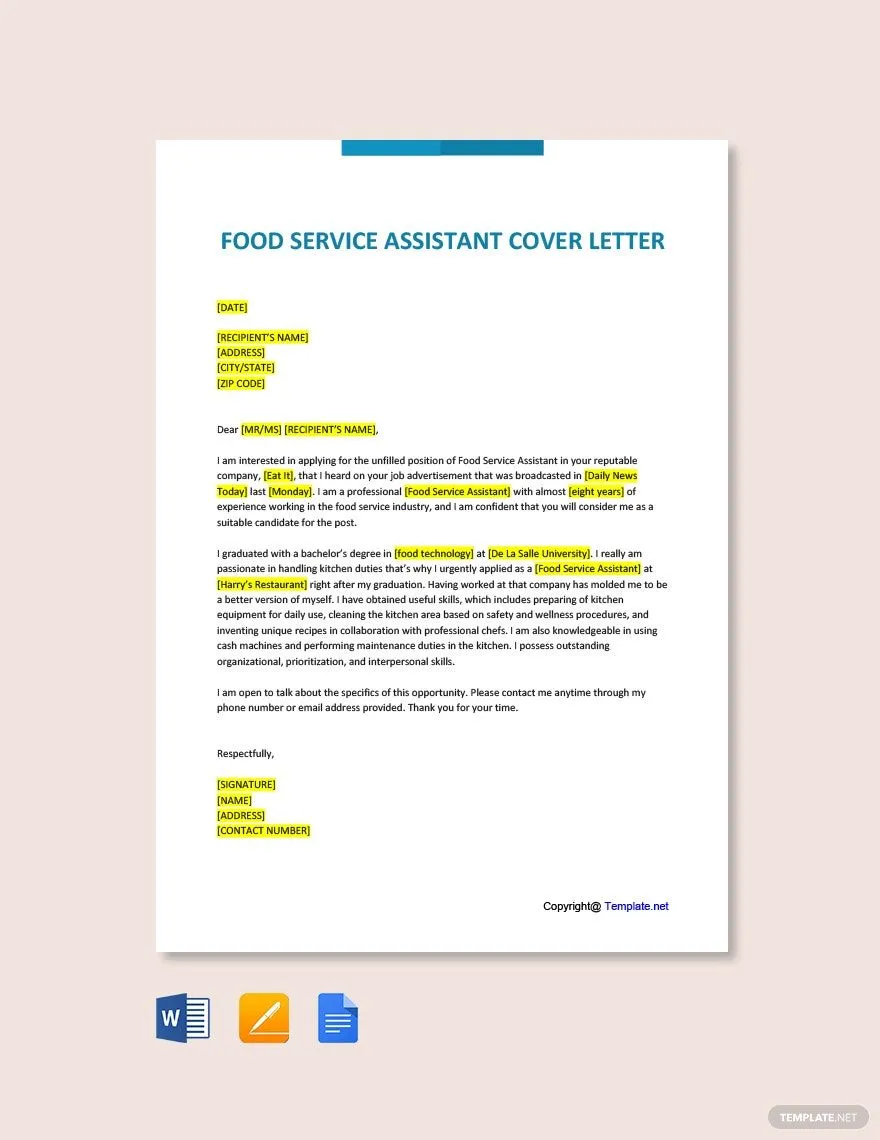Why a Food Services Cover Letter Matters
In the competitive world of food services, a well-crafted cover letter is your first opportunity to make a positive impression on potential employers. It serves as more than just an introduction; it’s a chance to showcase your personality, enthusiasm, and the unique skills you bring to the table. A compelling cover letter can significantly increase your chances of landing an interview. It allows you to elaborate on your resume, highlight relevant experiences, and demonstrate why you’re the ideal candidate for the position. It is your opportunity to explain any gaps in employment or address any concerns an employer might have. In essence, it’s a crucial tool for selling yourself and securing a coveted role in the food services industry.
Understanding the Food Services Industry
Before writing your cover letter, it’s vital to understand the nuances of the food services industry. This sector encompasses a wide range of establishments, including restaurants, hotels, catering companies, and institutional food services like hospitals and schools. Each of these environments demands different skill sets and experiences. Researching the specific type of establishment you’re applying to will help you tailor your cover letter effectively. For example, a cover letter for a fine-dining restaurant should emphasize attention to detail and customer service, while one for a fast-food chain might highlight speed and efficiency. Understanding the industry’s trends, such as the increasing demand for healthy options or the growing popularity of online ordering, can also help you craft a more relevant and impressive cover letter. This demonstrates your awareness and interest in the specific job.
Research the Company Before You Write
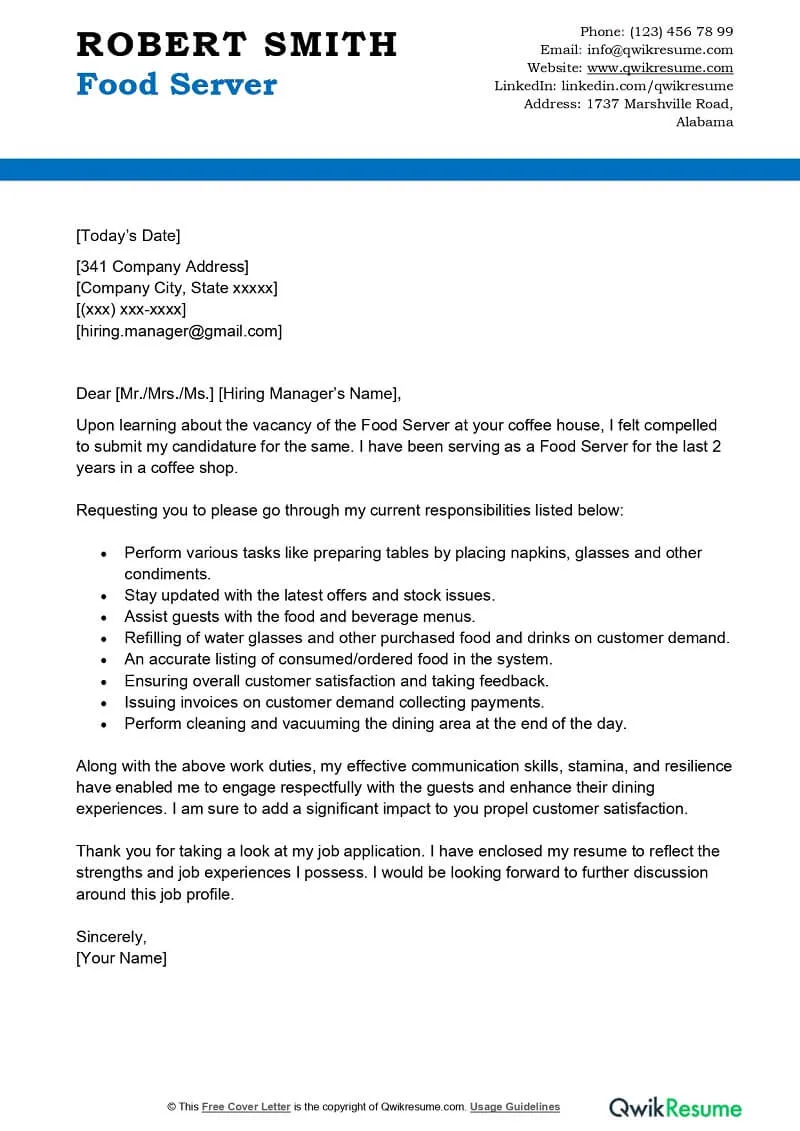
Thorough research is key to making your cover letter stand out. Take the time to explore the company’s website, social media profiles, and any other available information. Understand their mission, values, and the specific services or products they offer. Look for any recent news or achievements that you can mention in your letter. This research allows you to customize your cover letter, demonstrating genuine interest and showing that you’ve taken the initiative to learn about the organization. Identify specific aspects of the company that resonate with you and highlight how your skills and experiences align with their goals. By demonstrating this understanding, you showcase your dedication and increase your chances of getting noticed by the hiring manager.
Key Sections of a Food Services Cover Letter
A well-structured cover letter typically includes several key sections that work together to present you as a strong candidate. These sections include your contact information and the date, the hiring manager’s address (if known), a compelling opening paragraph, a section highlighting your relevant skills and experience, a section quantifying your achievements, a demonstration of your passion for food service, and a strong closing. Each section plays a vital role in conveying your qualifications and enthusiasm. The opening paragraph should grab the reader’s attention, while the body of the letter should provide specific examples of your accomplishments. The closing should reiterate your interest and include a call to action. Careful attention to these sections ensures your cover letter is both informative and persuasive. Your goal is to provide a well-organized document that gives the hiring manager all the information they need to consider you for the role.
Your Contact Information & the Date
Begin your cover letter by providing your contact information. This should include your full name, phone number, email address, and potentially a link to your professional online profile, such as LinkedIn. Ensure this information is accurate and up-to-date, making it easy for the hiring manager to reach you. Place the date directly below your contact information, using a standard format. If you know the hiring manager’s name and address, include their details below the date, mirroring the format used for your own contact details. This straightforward approach demonstrates professionalism and makes it easier for the recipient to understand who the letter is from, and when it was written. The format is simple, but it conveys your attention to detail.
Addressing the Hiring Manager
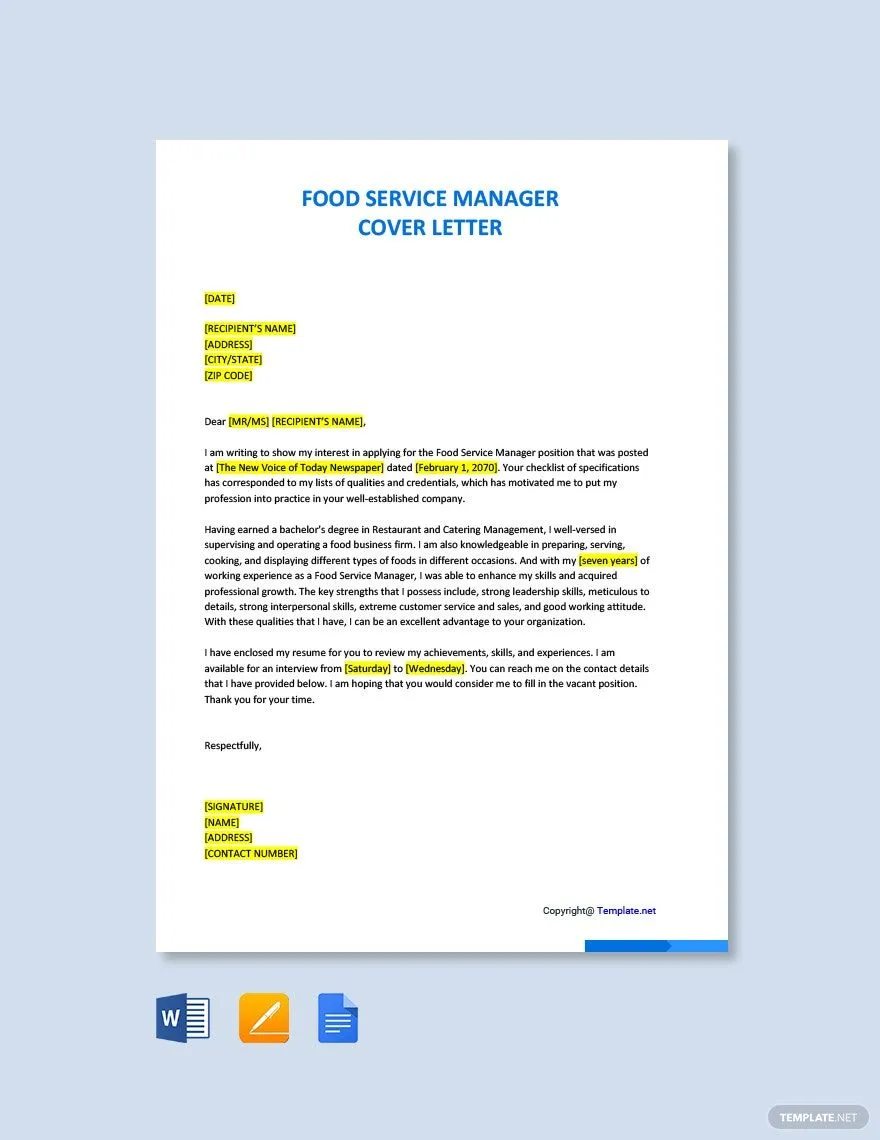
Whenever possible, address your cover letter to a specific person. Research the hiring manager’s name and title. Addressing your letter to a specific individual shows that you have taken the time to learn more about the organization and its staff, and it personalizes your application. If you are unable to find the hiring manager’s name, use a professional greeting like “Dear Hiring Manager” or “Dear [Department Name] Hiring Team.” Avoid generic greetings such as “To Whom It May Concern.” Personalizing your greeting makes your cover letter feel more authentic and shows a level of dedication and respect. When you address a specific person, your application stands out from the rest of the mass applications that do not take the time to identify the hiring manager.
Crafting a Compelling Opening Paragraph
Your opening paragraph is your first chance to capture the reader’s attention and make a strong first impression. Start with a brief statement of your interest in the position, and mention where you found the job posting. Then, immediately showcase your most relevant skill or experience. This could be a specific achievement, a key skill, or your understanding of the company’s needs. The goal is to make the hiring manager want to read more. Avoid generic opening lines like “I am writing to express my interest.” Instead, be direct and enthusiastic. This opening paragraph should immediately convey your enthusiasm for the position and the value you can bring to the company. By making this section interesting, you encourage the hiring manager to read the entire document.
Highlighting Relevant Skills and Experience
The body of your cover letter is where you elaborate on your skills and experience, showcasing why you’re a good fit for the role. Carefully review the job description and identify the key skills and qualifications the employer is seeking. Then, provide specific examples from your work history, education, or volunteer experience that demonstrate these skills. Use action verbs to describe your accomplishments and responsibilities, and quantify your achievements whenever possible (e.g., “Increased customer satisfaction by 15%.”). Explain how your past experiences have prepared you for the challenges of the new role and what you can bring to the table. Tailor your examples to align with the specific requirements of the job, making it clear how your qualifications match the employer’s needs. Remember, the hiring manager wants to know what you can do for them, so emphasize your relevant experience.
Quantifying Your Achievements
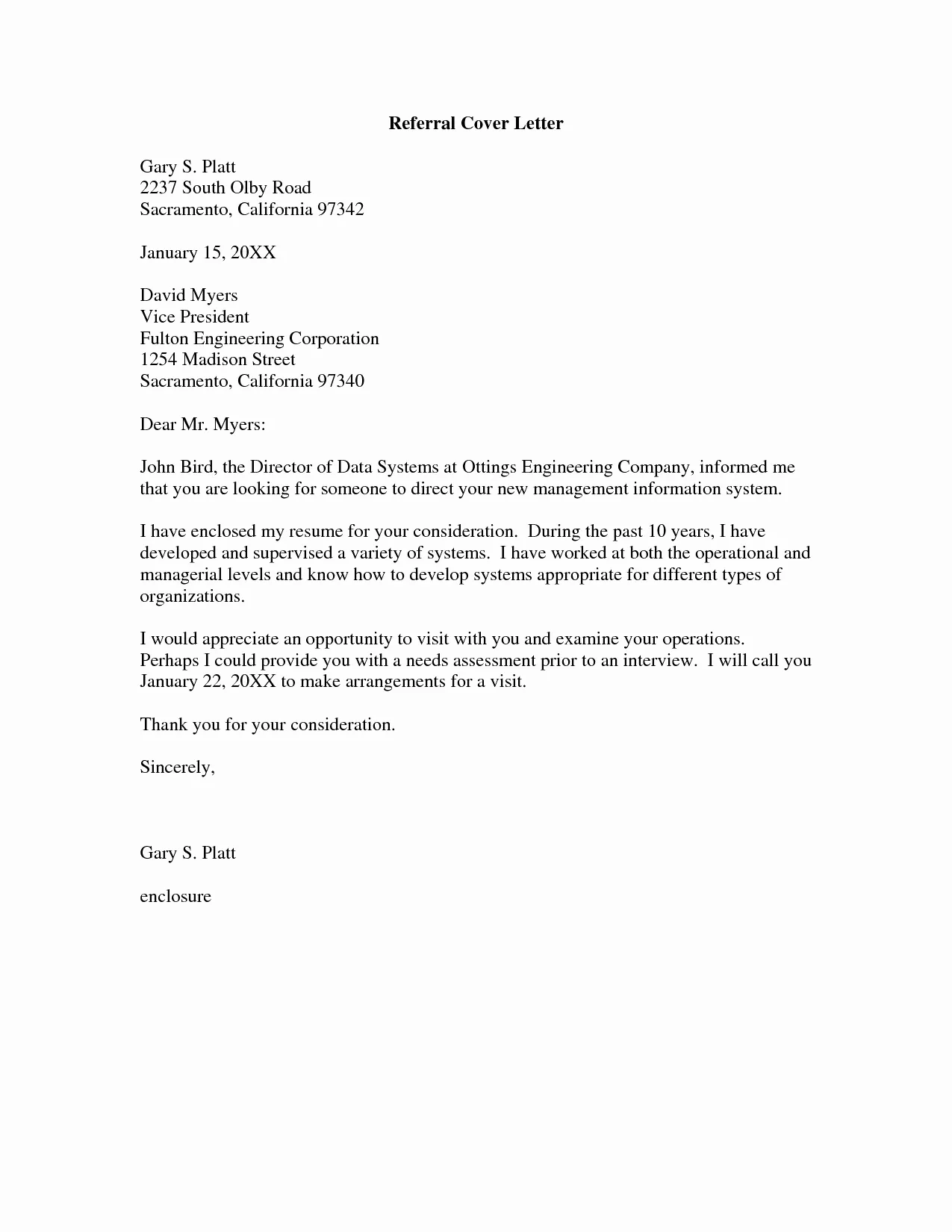
Whenever possible, quantify your achievements to provide concrete evidence of your capabilities. Instead of saying “Managed a busy kitchen,” say “Managed a kitchen serving over 200 meals per day, consistently maintaining a 98% customer satisfaction rating.” Numbers and statistics make your accomplishments more impactful and demonstrate your ability to achieve results. Include specific data on how you improved efficiency, increased sales, reduced costs, or enhanced customer satisfaction. For example, “Reduced food waste by 10% through improved inventory management.” Quantifying your achievements showcases your ability to make a tangible impact and gives the hiring manager a clear understanding of your value. This approach provides a clear picture of your skills. These numbers make your accomplishments more memorable.
Showcasing Your Passion for Food Service
Express your genuine passion for the food service industry throughout your cover letter. This goes beyond simply listing your skills and experience. It means conveying your enthusiasm for food, customer service, teamwork, and the overall dining experience. Discuss what motivates you in the field and why you’re excited about the specific opportunity. If you have a particular area of expertise or interest within food services, highlight it. For example, you could mention a passion for sustainable food practices, a talent for creating new menu items, or a commitment to providing excellent customer care. Personal touches show that you’re not just looking for a job, but a career that you are passionate about. Showcasing your passion can make a significant difference in a competitive job market.
Closing Your Cover Letter Effectively
Your closing paragraph should reiterate your interest in the position, express your gratitude for the hiring manager’s time and consideration, and include a clear call to action. Reiterate your enthusiasm and briefly summarize why you are an excellent fit for the role. Thank the hiring manager for reviewing your application. End by stating your willingness to discuss your qualifications further in an interview. Include your contact information again or express your availability for a phone call or in-person meeting. A strong closing leaves a lasting positive impression and encourages the hiring manager to take the next step. Always thank the hiring manager for their time. This is a polite way to end a cover letter.
Expressing Gratitude and Following Up
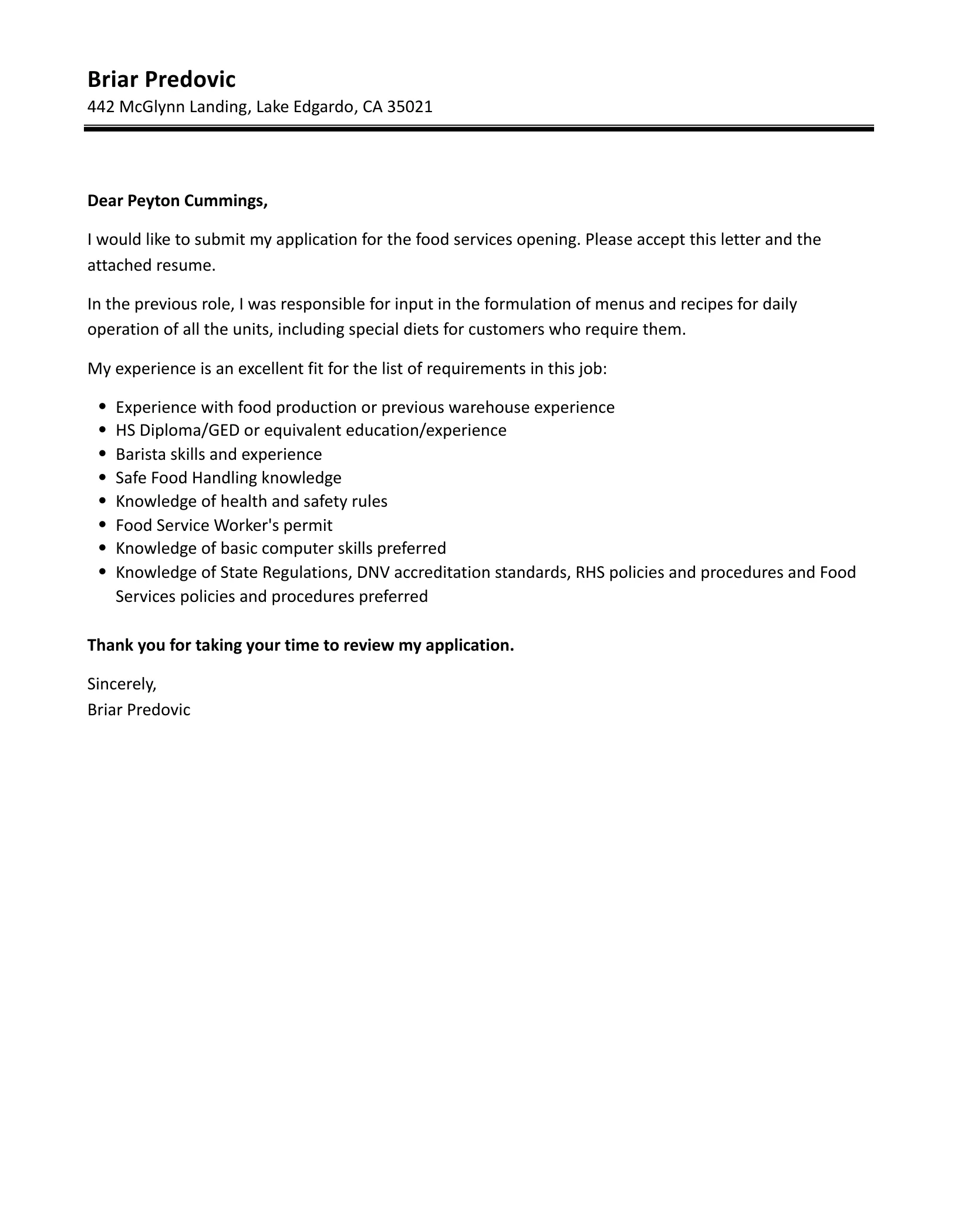
A small touch of gratitude and a well-thought-out follow-up strategy can significantly increase your chances of success. In your closing paragraph, express your gratitude for the hiring manager’s time and consideration. Then, a week or two after submitting your cover letter and resume, consider sending a polite follow-up email. In the email, reiterate your interest in the position and briefly mention a key qualification or achievement from your cover letter. This shows your continued interest and reinforces your enthusiasm. You can also reiterate your availability for an interview. Following up demonstrates professionalism and can set you apart from other applicants. It also shows that you care about getting the job.
Proofreading and Editing Your Cover Letter
Before submitting your cover letter, carefully proofread and edit it for any errors in grammar, spelling, and punctuation. Typos and grammatical mistakes can make your cover letter look unprofessional and might lead the hiring manager to dismiss your application. Read your letter aloud to catch any awkward phrasing or inconsistencies. It may be helpful to have a friend or family member review your cover letter for feedback. Make sure your language is clear, concise, and easy to understand. A polished cover letter demonstrates attention to detail and professionalism. Check the details such as the company’s name and the correct job title. Poor grammar and spelling shows that you did not take the time to ensure that your application is perfect.
Common Mistakes to Avoid
Avoid common cover letter mistakes that can hurt your chances of getting hired. These include using generic templates without customizing them, including irrelevant information, and writing overly long or verbose sentences. Avoid using slang or casual language. Be sure to not include any negative comments about previous employers or colleagues. Do not make any spelling or grammar errors, as these can be a sign of inattention to detail. Poorly formatted cover letters are not appealing to read. Always proofread your cover letter before you send it. Reviewing your cover letter with a fresh set of eyes can help you make sure that you avoid these common pitfalls.
Using Action Verbs Effectively
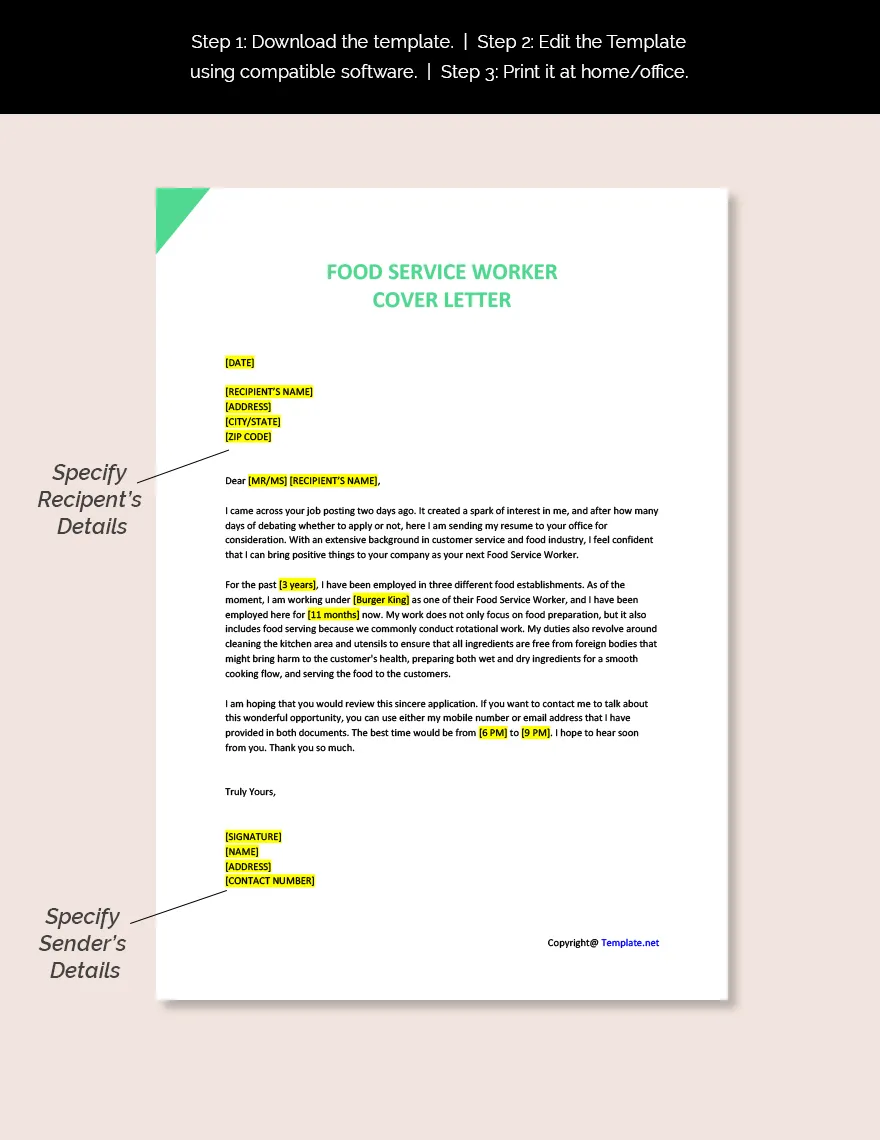
Employ strong action verbs to showcase your accomplishments and responsibilities. Instead of saying “Responsible for customer service,” say “Provided exceptional customer service, resolving issues and exceeding customer expectations.” Action verbs make your statements more dynamic and engaging. Use a variety of action verbs to describe your skills. Examples include “managed,” “coordinated,” “implemented,” “trained,” “increased,” “decreased,” and “achieved.” Choose verbs that accurately reflect your accomplishments and the specific requirements of the job. These verbs provide clear evidence of your value and make your cover letter more compelling. Action verbs make your cover letter easier and more engaging to read.
Tailoring Your Cover Letter to Each Job
Avoid sending a generic cover letter. Customize each cover letter for the specific job and company you’re applying to. The job description provides valuable information about the required skills and qualifications, and the company’s website offers insights into its culture and values. Use this information to tailor your letter, highlighting the most relevant experiences and skills. This demonstrates that you’ve taken the time to understand the role and the company. Address the specific needs of the employer, and show how your qualifications align with those needs. When you personalize your cover letter, you show that you care. Generic cover letters are not as compelling as personalized documents.
Formatting Your Cover Letter
Formatting your cover letter correctly is essential for readability and professionalism. Use a clear, easy-to-read font, such as Arial or Times New Roman, with a font size between 10 and 12 points. Use single spacing within paragraphs and double spacing between paragraphs. Left-align your text, avoiding justified text. Include ample white space to make your letter visually appealing and easy to scan. Maintain consistent margins throughout the document. A well-formatted cover letter demonstrates attention to detail and professionalism. Always proofread and edit it before you send it. A professional looking cover letter is easier to read, and increases the chances of the hiring manager reading the whole document. Well-formatted documents are more likely to be reviewed.
Submitting Your Cover Letter
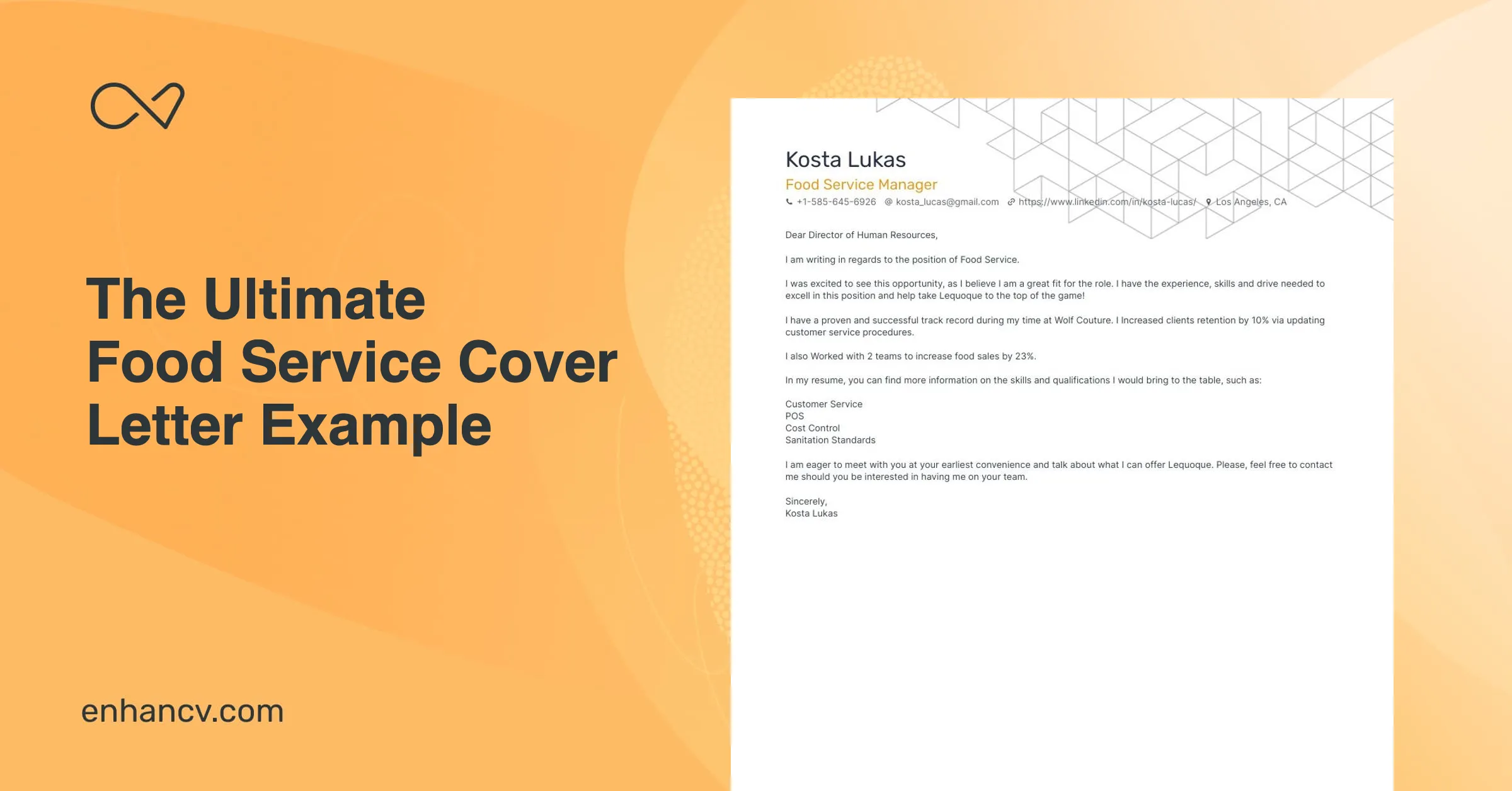
When submitting your cover letter, carefully follow the instructions provided in the job posting. If the job posting asks for a cover letter and resume to be sent as attachments, make sure both are in a common file format, such as PDF or DOCX. Name your files clearly with your name and the job title. If you’re submitting your cover letter through an online application portal, review your letter carefully to ensure it’s properly formatted and all required fields are completed. If the posting specifies a particular format, be sure to follow those instructions. Be sure to submit your cover letter, and that it follows the directions of the job posting. Proper submission makes your application stand out to potential employers.
